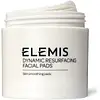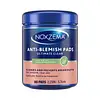What's inside
What's inside
 Key Ingredients
Key Ingredients

No key ingredients
 Benefits
Benefits

No benefits
 Concerns
Concerns

 Ingredients Side-by-side
Ingredients Side-by-side

Water
Skin ConditioningButylene Glycol
HumectantLactococcus Ferment Lysate
Skin ConditioningPolysorbate 20
EmulsifyingMethyl Gluceth-20
HumectantLactic Acid
BufferingPhenoxyethanol
PreservativeBetaine
HumectantPropylene Glycol
HumectantDisodium EDTA
Benzoic Acid
MaskingSodium Hydroxide
BufferingParfum
MaskingDehydroacetic Acid
PreservativeTromethamine
BufferingEthylhexylglycerin
Skin ConditioningPapain
Skin ConditioningSaponins
CleansingSodium Benzoate
MaskingSodium Chloride
MaskingGlycerin
HumectantBehenyl Alcohol
EmollientButyrospermum Parkii Butter
Skin ConditioningHydrogenated Castor Oil
EmollientStearyl Alcohol
EmollientPoria Cocos Extract
Skin ConditioningProtease
ExfoliatingSaponaria Officinalis Leaf/Root Extract
Skin ConditioningSubtilisin
Skin ConditioningTocopheryl Acetate
AntioxidantWater, Butylene Glycol, Lactococcus Ferment Lysate, Polysorbate 20, Methyl Gluceth-20, Lactic Acid, Phenoxyethanol, Betaine, Propylene Glycol, Disodium EDTA, Benzoic Acid, Sodium Hydroxide, Parfum, Dehydroacetic Acid, Tromethamine, Ethylhexylglycerin, Papain, Saponins, Sodium Benzoate, Sodium Chloride, Glycerin, Behenyl Alcohol, Butyrospermum Parkii Butter, Hydrogenated Castor Oil, Stearyl Alcohol, Poria Cocos Extract, Protease, Saponaria Officinalis Leaf/Root Extract, Subtilisin, Tocopheryl Acetate
 Reviews
Reviews

Ingredients Explained
These ingredients are found in both products.
Ingredients higher up in an ingredient list are typically present in a larger amount.
Disodium EDTA plays a role in making products more stable by aiding other preservatives.
It is a chelating agent, meaning it neutralizes metal ions that may be found in a product.
Disodium EDTA is a salt of edetic acid and is found to be safe in cosmetic ingredients.
Learn more about Disodium EDTAParfum is a catch-all term for an ingredient or more that is used to give a scent to products.
Also called "fragrance", this ingredient can be a blend of hundreds of chemicals or plant oils. This means every product with "fragrance" or "parfum" in the ingredients list is a different mixture.
For instance, Habanolide is a proprietary trade name for a specific aroma chemical. When used as a fragrance ingredient in cosmetics, most aroma chemicals fall under the broad labeling category of “FRAGRANCE” or “PARFUM” according to EU and US regulations.
The term 'parfum' or 'fragrance' is not regulated in many countries. In many cases, it is up to the brand to define this term.
For instance, many brands choose to label themselves as "fragrance-free" because they are not using synthetic fragrances. However, their products may still contain ingredients such as essential oils that are considered a fragrance by INCI standards.
One example is Calendula flower extract. Calendula is an essential oil that still imparts a scent or 'fragrance'.
Depending on the blend, the ingredients in the mixture can cause allergies and sensitivities on the skin. Some ingredients that are known EU allergens include linalool and citronellol.
Parfum can also be used to mask or cover an unpleasant scent.
The bottom line is: not all fragrances/parfum/ingredients are created equally. If you are worried about fragrances, we recommend taking a closer look at an ingredient. And of course, we always recommend speaking with a professional.
Learn more about ParfumWater. It's the most common cosmetic ingredient of all. You'll usually see it at the top of ingredient lists, meaning that it makes up the largest part of the product.
So why is it so popular? Water most often acts as a solvent - this means that it helps dissolve other ingredients into the formulation.
You'll also recognize water as that liquid we all need to stay alive. If you see this, drink a glass of water. Stay hydrated!
Learn more about Water